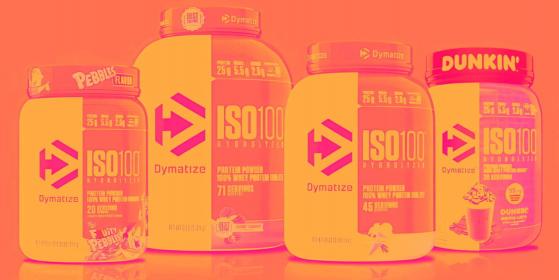Nutrition products company Bellring Brands (NYSE:BRBR) reported Q1 CY2024 results beating Wall Street analysts' expectations, with revenue up 28.3% year on year to $494.6 million. The company's full-year revenue guidance of $1.96 billion at the midpoint also came in 1.9% above analysts' estimates. It made a non-GAAP profit of $0.45 per share, improving from its profit of $0.24 per share in the same quarter last year.
Is now the time to buy BellRing Brands? Find out by reading the original article on StockStory, it's free.
BellRing Brands (NYSE:BRBR) Q1 CY2024 Highlights:
- Revenue: $494.6 million vs analyst estimates of $466.9 million (5.9% beat)
- EPS (non-GAAP): $0.45 vs analyst estimates of $0.33 (34.5% beat)
- The company lifted its revenue guidance for the full year from $1.91 billion to $1.96 billion at the midpoint, a 2.6% increase
- It also raised its full-year EBITDA guidance from $387.5 million to $410 million at the midpoint, a 5.8% increase
- Gross Margin (GAAP): 33.2%, up from 30.4% in the same quarter last year
- Free Cash Flow of $16.5 million, down 77.7% from the previous quarter
- Organic Revenue was up 28.3% year on year
- Sales Volumes were up 42.7% year on year
- Market Capitalization: $7.52 billion
Shelf-Stable FoodAs America industrialized and moved away from an agricultural economy, people faced more demands on their time. Packaged foods emerged as a solution offering convenience to the evolving American family, whether it be canned goods or snacks. Today, Americans seek brands that are high in quality, reliable, and reasonably priced. Furthermore, there's a growing emphasis on health-conscious and sustainable food options. Packaged food stocks are considered resilient investments. People always need to eat, so these companies can enjoy consistent demand as long as they stay on top of changing consumer preferences. The industry spans from multinational corporations to smaller specialized firms and is subject to food safety and labeling regulations.
Sales GrowthBellRing Brands carries some recognizable brands and products but is a mid-sized consumer staples company. Its size could bring disadvantages compared to larger competitors benefiting from better brand awareness and economies of scale. On the other hand, BellRing Brands can still achieve high growth rates because its revenue base is not yet monstrous.
As you can see below, the company's annualized revenue growth rate of 20.6% over the last three years was impressive as consumers bought more of its products.
This quarter, BellRing Brands reported remarkable year-on-year revenue growth of 28.3%, and its $494.6 million in revenue topped Wall Street estimates by 5.9%. Looking ahead, Wall Street expects sales to grow 9.3% over the next 12 months, a deceleration from this quarter.
Cash Is KingAlthough earnings are undoubtedly valuable for assessing company performance, we believe cash is king because you can't use accounting profits to pay the bills.
BellRing Brands's free cash flow came in at $16.5 million in Q1, representing a 3.3% margin. This result was great for the business as it flipped from cash flow negative in the same quarter last year to positive this quarter.
Over the last eight quarters, BellRing Brands has shown solid cash profitability, giving it the flexibility to reinvest or return capital to investors. The company's free cash flow margin has averaged 9.2%, above the broader consumer staples sector. Furthermore, its margin has averaged year-on-year increases of 13.9 percentage points over the last 12 months. Shareholders should be excited as this will certainly help BellRing Brands achieve its long-term strategic goals.
Key Takeaways from BellRing Brands's Q1 Results
We were impressed by how significantly BellRing Brands blew past analysts' organic revenue growth and EPS expectations this quarter, driven by a whopping 42.7% increase in its sales volumes - that type of growth is unheard of in the stable consumer staples sector and was led by Premier Protein's outperformance. We were also excited it achieved this growth while expanding its gross margin, which rose 2.9 percentage points year on year to 33.2%.
Because of the strong momentum, the company raised its full-year revenue and EBITDA guidance, topping Wall Street's projections. Zooming out, we think this was a fantastic quarter that should have shareholders cheering. The stock is up 8.6% after reporting and currently trades at $62.1 per share.
